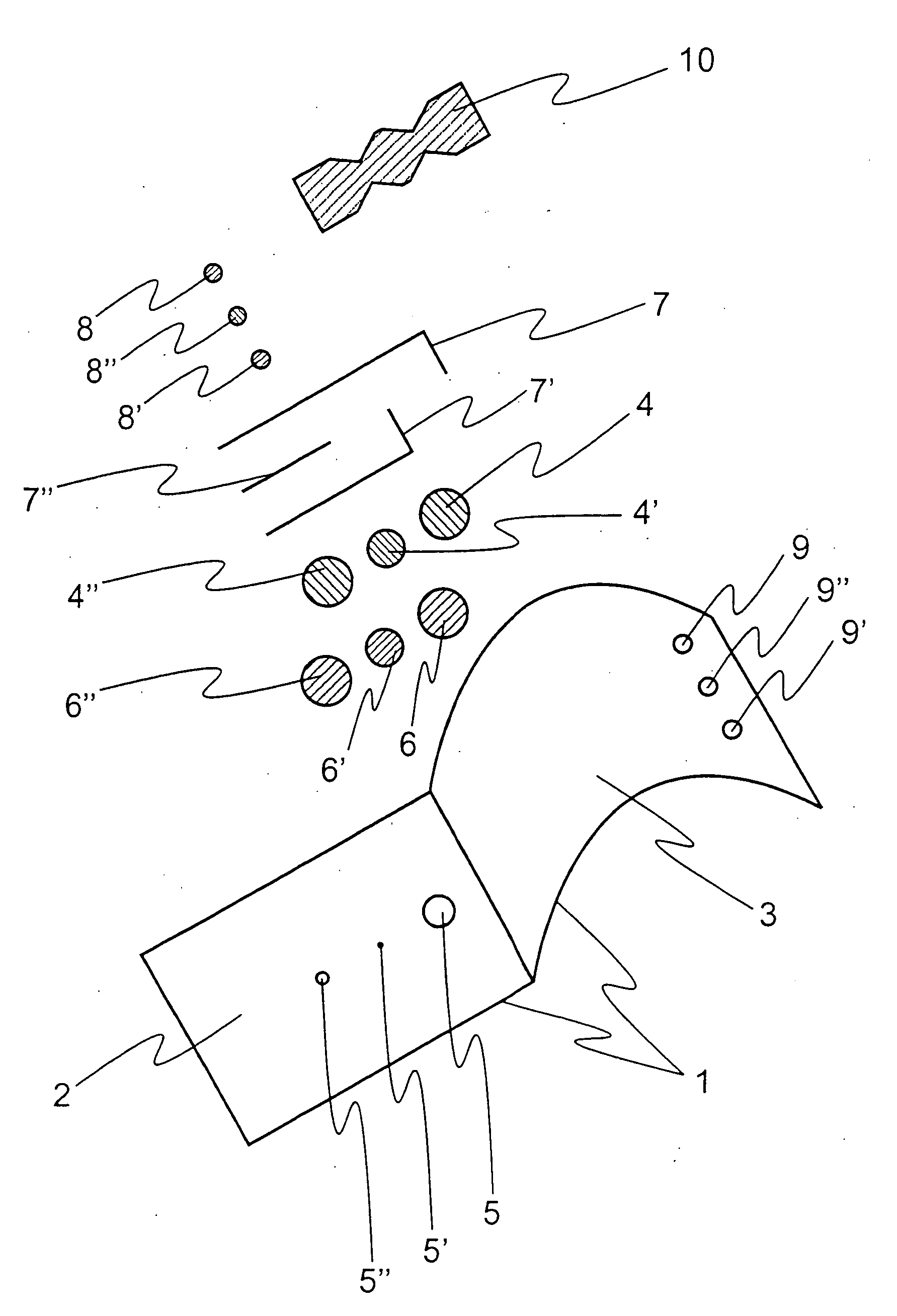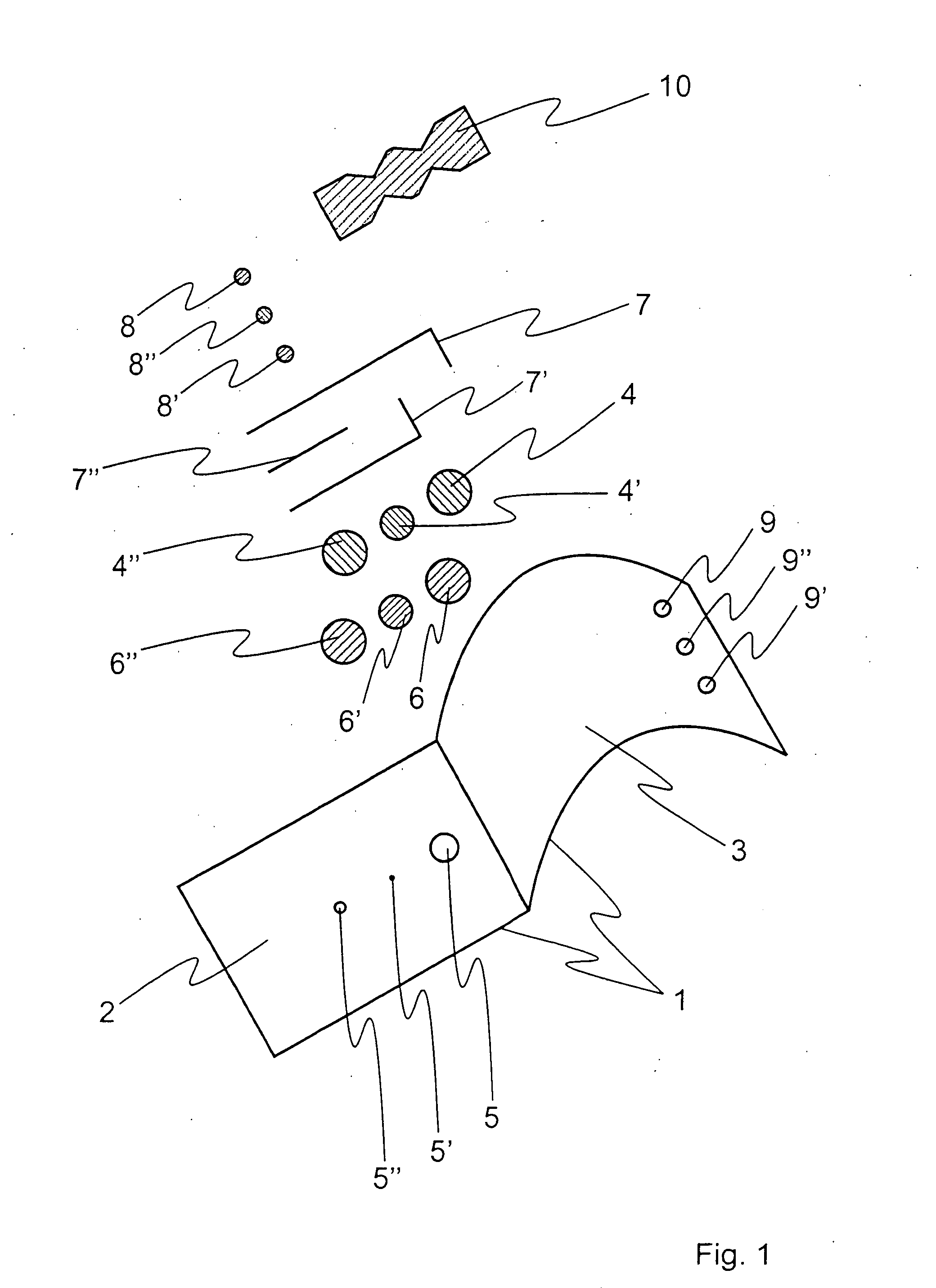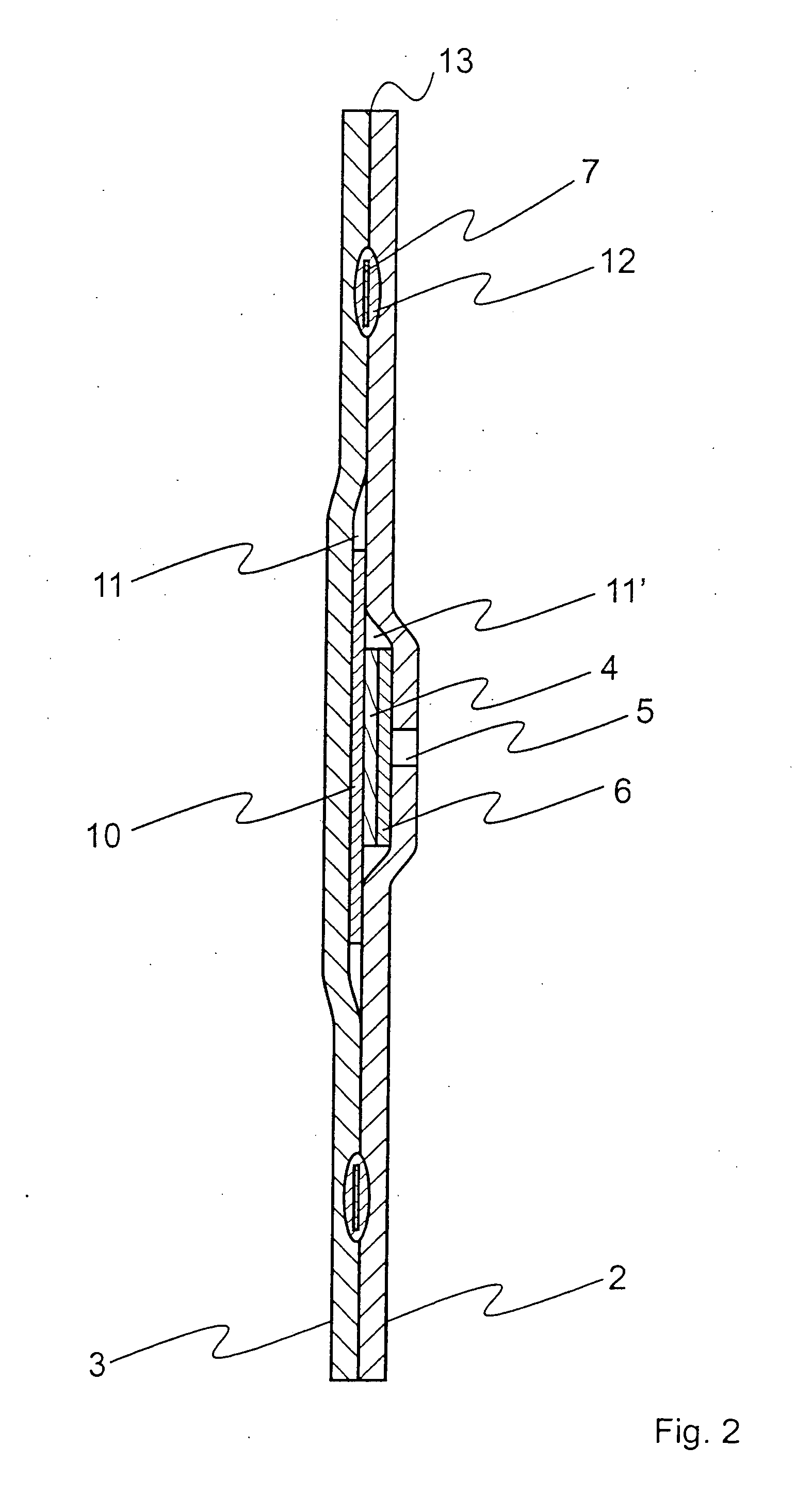Electrochemical gas sensor and process for manufacturing same
- Summary
- Abstract
- Description
- Claims
- Application Information
AI Technical Summary
Benefits of technology
Problems solved by technology
Method used
Image
Examples
Embodiment Construction
[0032] Referring to the drawings in particular, FIG. 1 shows a complete gas sensor according to the present invention in the form of an exploded view before assembly. It comprises a film pocket 1, comprising the later housing lower part 2 and the later housing upper part 3. Openings 5, 5′, 5″ are present in this film pocket 1 in the area of the housing lower part 2, above which the electrodes 4, 4′, 4″ are arranged, which can be used as a working electrode 4, a counterelectrode 4″ and a reference electrode 4′. The largest opening 5 is used for the entry of the gas to be detected to the working electrode 4. The other openings 5′ and 5″ are used to supply the other two electrodes 4′ and 4″ with oxygen, the opening 5′ for supplying the reference electrode 4′ with oxygen being frequently eliminated. To prevent the electrolyte from escaping, the openings 5, 5′, 5″ are covered with membranes 6, 6′, 6″, which are permeable to the gas but are electrolyte-proof To avoid slipping during the a...
PUM
| Property | Measurement | Unit |
|---|---|---|
| Force | aaaaa | aaaaa |
| Volume | aaaaa | aaaaa |
| Area | aaaaa | aaaaa |
Abstract
Description
Claims
Application Information
 Login to View More
Login to View More - R&D
- Intellectual Property
- Life Sciences
- Materials
- Tech Scout
- Unparalleled Data Quality
- Higher Quality Content
- 60% Fewer Hallucinations
Browse by: Latest US Patents, China's latest patents, Technical Efficacy Thesaurus, Application Domain, Technology Topic, Popular Technical Reports.
© 2025 PatSnap. All rights reserved.Legal|Privacy policy|Modern Slavery Act Transparency Statement|Sitemap|About US| Contact US: help@patsnap.com



